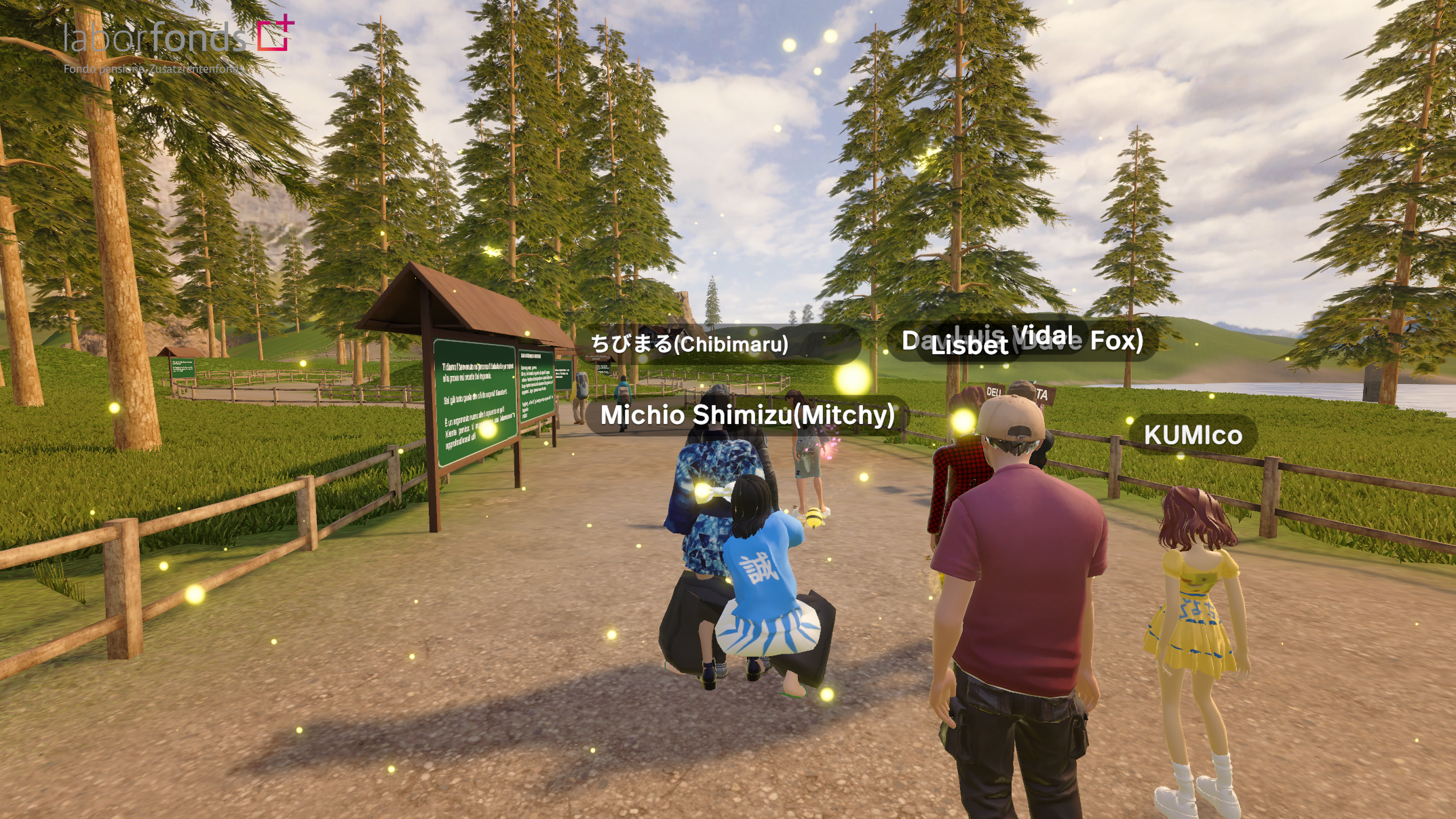From Forest Trails to Alpine Towns: Exploring Human-Centered Design in Digital Environments
This week, the Digital Nomads community convened on Spatial.io to observe and analyze the application of Human-Centred Design (HCD) principles within two distinct digital environments. As virtual worlds increasingly offer spaces for information, interaction, and even a form of digital tourism, the session aimed to discern what design choices foster engaging and accessible user experiences.
A serene forest landscape, complete with picturesque views of mountains.
The first environment encountered was a virtual pathway winding through a serene forest, framed by picturesque mountain vistas. Designed for a financial institution (Laborfonds), the space presented information via signposts, guiding users to make choices and follow specific routes. The interaction model appeared to prioritize information dissemination within a scenic backdrop.
boasting over 750 years of history and renowned for its sports, culture, and events.
The second digital space, Digitalstadt Kitzbuehel, transported participants to a detailed recreation of a historic alpine town, renowned for its blend of sports, culture, and events. This environment, based on real-world surroundings, immediately offered a more immersive and interactive experience, eliciting comments on its potential for "digital tourism."
The stark contrast between the two environments provided a tangible case study for observing HCD principles in action, revealing both effective and less successful approaches.
The Dichotomy of Approach: Information Delivery vs. Embodied Interaction
A clear divergence in user experience emerged. While the forest pathway presented a linear flow of information, akin to a website transposed into a 3D setting, the alpine town prioritized a sense of presence and interactivity. Participants noted the limited engagement in the former, with interaction primarily restricted to route selection via static signposts. In contrast, the latter fostered a feeling of "being there," with the detailed recreation of the physical world contributing significantly to immersion. Subtle cues, such as the presence of spoken dialogue from virtual characters and even the sound of footsteps during movement, further enhanced this sense of realism.
A stunning board room overlooking Digitalstadt Kitzbuehel
The design choices reflected differing priorities. The forest environment, while visually appealing, seemed to adhere to a more traditional information delivery model. The alpine town, however, embraced the potential for embodied interaction, allowing users to explore and engage with the environment in a manner more akin to real-world experiences. The effective use of spatial elements, such as skyboxes to maintain a sense of place, contributed to a cohesive and immersive user journey.
Key Observations on Engagement and Accessibility:
A magazine vending machine - leading to Kitzmagazin
The analysis revealed that engagement was significantly higher in the more interactive environment. The ability to converse with virtual characters and discover interactive elements fostered a greater sense of presence and connection. Accessibility, while present in both spaces through clear visuals, was perceived as more inherent in the intuitive navigation and interactive elements of the alpine town. The straightforward, almost passive interaction in the forest environment, while simple, offered fewer avenues for deeper engagement or catering to diverse interaction preferences beyond standard desktop controls.
Implications for the Evolution of Digital Environments:
Overlooking the town of Digitalstadt Kitzbuehel
The Digital Nomads' observations suggest a clear trend towards the value of embodied presence and meaningful interaction in digital environments. The success of the digitally twinned alpine town highlighted the potential for these spaces to transcend simple information delivery and offer genuinely immersive experiences. The discussion touched upon the vast applications of such designs, from enhanced communication and understanding of real-world locations to potential uses in urban planning and architectural visualization.
Ultimately, the analysis of these two distinct digital environments underscored the critical role of Human-Centered Design in shaping effective and engaging spatial computing experiences. The shift from a web-centric approach to one that prioritizes intuitive interaction, embodied presence, and a deep understanding of user needs appears to be a key determinant in creating digital environments that truly resonate and offer value beyond mere visual presentation. The ongoing exploration by the Digital Nomads promises further insights into the evolving landscape of human interaction within these increasingly sophisticated digital realms.







